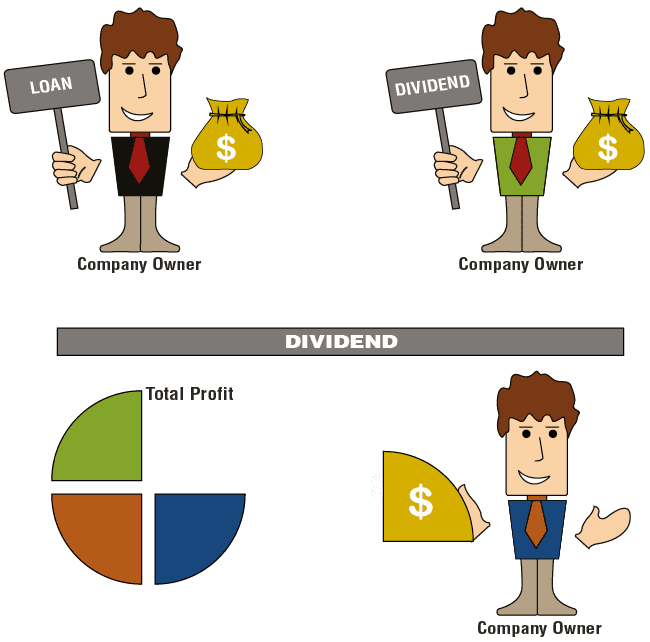The shareholders can withdraw money from the company in two different ways:
- As a loan – the party taking the loan must repay it.
- As a dividend – the word “dividend” is derived from the Latin word “dividendum”, which means distribution. A dividend is a given sum of money that the shareholders take for themselves from the company’s retained earnings (they are not required to take it). The owners do not have to return a dividend that they have taken. When there are no profits, the owners cannot take a dividend. The shareholders are also entitled to receive a dividend from profits accumulated in previous years. The amount of the dividend that a company distributes does not necessarily reflect its profits at that time.
Example: In 2008, a new company named Lisa’s Bakery earned a $10,000 profit. The owners could have taken a dividend of up to $10,000, but they decided to take only $6,000, leaving the company with $4,000 in retained earnings. The company earned only $10 in 2009, but the owners are entitled to take a dividend of $4,010 ($4,000 from 2008 and $10 from 2009).
Note: The owners can also withdraw money from the company by paying themselves salaries, provided that they are employed as executives, or any other position in the company.



